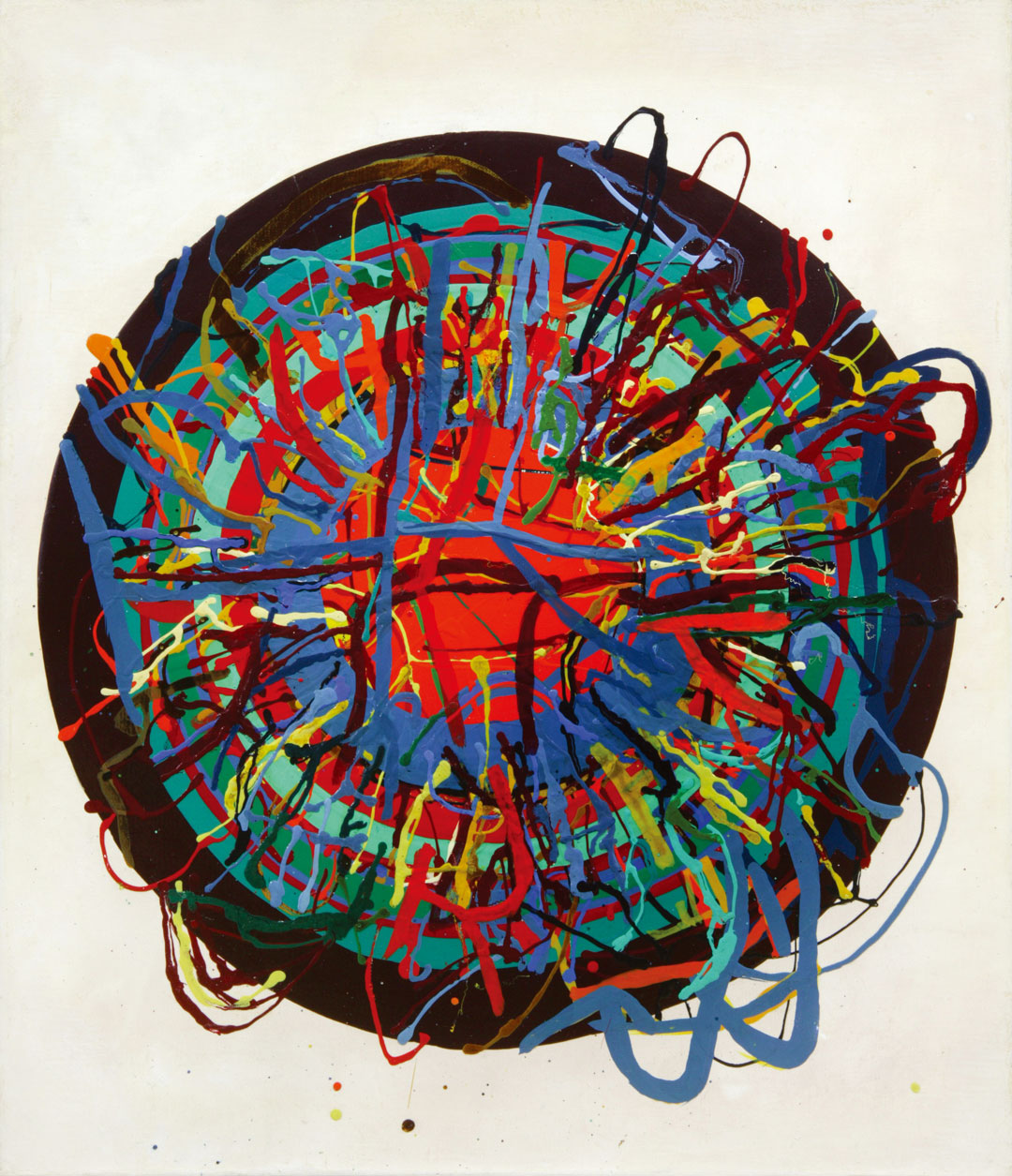
Work, 1965
Atsuko Tanaka
| Medium: | Vinyl on canvas |
| Dimensions: | 53 x 45.8 cm |
about the work
Atsuko Tanaka, who was born in Osaka in 1932, is one of the most prominent representatives of the Gutai artist group, which is represented by several artists in the Reinhard Ernst Collection. In 1950, she completed a preparatory course of study at the Art Research Institute in Osaka. A year later, she finally began studying Western painting at the Municipal Art School in Kyoto. During her studies, she met her fellow student Akira Kanayama, who help – a group that combined varied art forms in an experimental manner and challenged the participation of visitors not only in exhibitions but also involved their audience in stage plays and multimedia environments. The Gutai group was founded in 1954 by Jirō Yoshihara, who remained the mentor for its young group members during its entire period of influence. Among other things, he gave members such as Atsuko Tanaka private instruction in oil painting.
Tanaka’s œuvre goes beyond the canvas. By integrating everyday materials in her collage-like works, she provided a new interpretation of painting. During her time in the Gutai group, Tanaka developed participative works such as Work (Bell). For the Gutai exhibition in October 1955, she installed several bells and electric chimes in a room, which were triggered by visitors at the touch of a button or physical contact. A chain of sounds then reverberated through the entire exhibition space. The artist was fascinated by the merging of art, movement and technology. Against this background, she developed what was probably her best-known work for Gutai, the Electric Dress, which was presented at the second Gutai exhibition in 1956. This consists of a dress made of painted light bulbs, which is based on the traditional kimono. Tanaka herself wore it at several Gutai art events. Based on the Electric Dress, the artist developed a visual vocabulary of circles and lines in order to find a new language, with which abstract spaces can be given a specific terminology. Her work in the Reinhard Ernst Collection also fits in this context. In front of a white background, the artist placed a black circle, whose ever-decreasing radius in size is graduated in different colours. On this calm, almost restrained circular motif, there are radially arranged splashes of paint, which break through the contour of the circle and thus give the image dynamic energy. This creates a sense of tension between calm and movement, discipline and spontaneity.
In 1965, Atsuko Tanaka and Akira Kanayama left the Gutai group citing differences of opinion. The two artists moved to Osaka and married. From the 2000s onwards, the artist held an increasing number of solo exhibitions in Japan, Europe and the United States, such as at the Galerie im Taxispalais in Innsbruck in 2002 or the Grey Art Gallery of New York University in 2004. She died in Asuka in 2005. Two years after Tanaka’s death, a reconstruction of her Electric Dress could be seen at Documenta 12 in Kassel.